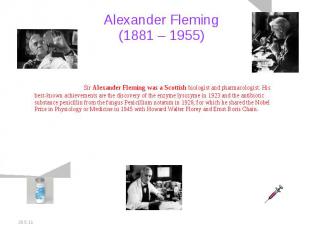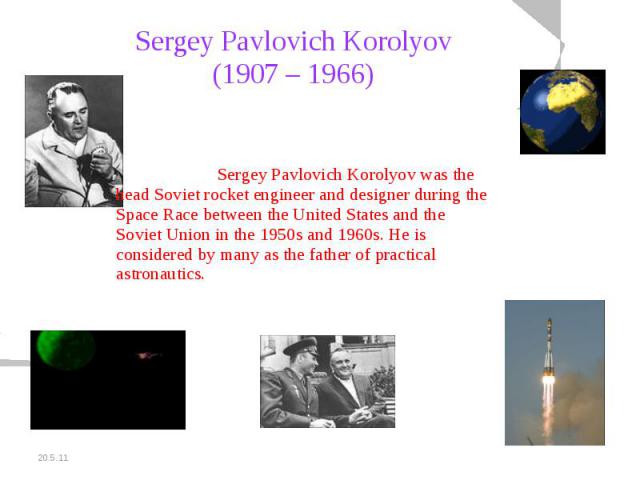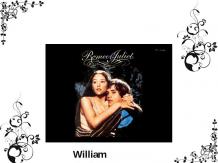Презентация на тему: Изобретатели и изобретения

INVENTIONS AND INVENTORS Презентация по теме «Изобретатели и изобретения» подготовленаРогожкиной Кариной Андреевной

"To raise new questions, new possibilities, to regard old questions from a new angle, requires creative imagination and marks real advance"."Imagination is more important than knowledge". Albert Einstein

To invent is to see anew. An invention is a new composition, device, or process. Some inventions are based on pre-existing models or ideas and others are radical breakthroughs. Inventions can extend the boundaries of human knowledge or experience.

Joseph Nicéphore Niépce (1765 – 1833) Joseph Nicéphore Niépce was a French inventor, most noted as one of the inventors of photography and a pioneer in the field. He is well-known for taking some of the earliest photographs, dating to the 1820s. As revolutionary as his invention was, Niépce is little known even today.

Alexander Graham Bell(1847 – 1922) Alexander Graham Bell was an eminent scientist, inventor, engineer and innovator who is credited with inventing the first practical telephone. His research on hearing and speech led him to experiment with hearing devices which eventually culminated in Bell being awarded the first U.S. patent for the telephone in 1876.

Karl Friedrich Benz(1844 – 1929) Karl Friedrich Benz was a German engine designer and automobile engineer, generally regarded as the inventor of the petrol-powered automobile and pioneering founder of the automobile manufacturer, Mercedes-Benz.

The Lumière brothers: Auguste Marie Louis Nicolas (1862 – 1954) Louis Jean (1864– 1948) The Lumière brothers were among the earliest filmmakers. Louis had made some improvements to the still-photograph process, the most notable being the dry-plate process, which was a major step towards moving images. The cinematograph itself was patented on 13 February 1895 and the first footage ever to be recorded using it was recorded on 19 March 1895.

The Wright brothers: Orville (1871 – 1948) Wilbur (1867 – 1912) The Wright brothers were two Americans who are generally credited with inventing and building the world's first successful airplane and making the first controlled, powered and sustained heavier-than-air human flight, on December 17, 1903. In two years afterward, the brothers developed their flying machine into the first practical fixed-wing aircraft. The Wright brothers were the first to invent aircraft controls that made fixed-wing flight possible.

László József Bíró (1899 – 1985) László József Bíró was the inventor of the modern ballpoint pen.He presented the first production of the ball pen at the Budapest International Fair in 1931. Working with his brother George, a chemist, he developed a new tip consisting of a ball that was free to turn in a socket, and as it turned it would pick up ink from a cartridge and then roll to deposit it on the paper. Bíró patented the invention in Paris in 1938.

James Murray Spangler(1848 - 1915) In 1907, James Murray Spangler, a janitor in Canton, Ohio invented an electric vacuum cleaner from a fan, a box, and a pillowcase.

John Logie Baird (1888 – 1946) John Logie Baird was a British engineer and inventor of the world's first working television system, also the world's first fully electronic colour television broadcast. Although Baird's electromechanical system was eventually displaced by purely electronic systems his early successes demonstrating working television broadcasts and his colour and cinema television work earn him a prominent place in television's invention.

John Gorrie (1803 – 1855) John Gorrie was a physician, scientist, inventor, and humanitarian, is considered the father of refrigeration and air conditioning.

Henry Ford was the American founder of the Ford Motor Company and father of modern assembly lines used in mass production. His introduction of the Model T automobile revolutionized transportation and American industry. He was a prolific inventor and was awarded 161 U.S. patents.

Richard G.Drew (1886-1982) In 1923 Richard Drew settled down on work in company Minnesota Mining and Manufacturing which concerned with the production of the sandpaper, exploratory activity in the field of watertight surfaces and experimented with cellophane. And 27 May 1930 Richard Drew patented his invention - transparent getting sticky tape.

Alexander Fleming (1881 – 1955) Sir Alexander Fleming was a Scottish biologist and pharmacologist. His best-known achievements are the discovery of the enzyme lysozyme in 1923 and the antibiotic substance penicillin from the fungus Penicillium notatum in 1928, for which he shared the Nobel Prize in Physiology or Medicine in 1945 with Howard Walter Florey and Ernst Boris Chain.

Sergey Pavlovich Korolyov(1907 – 1966) Sergey Pavlovich Korolyov was the head Soviet rocket engineer and designer during the Space Race between the United States and the Soviet Union in the 1950s and 1960s. He is considered by many as the father of practical astronautics.

Akio Morita (1921 — 1999) Akio Morita was a Japanese entrepreneur, cofounder of Sony Corp. In 1949, the company developed magnetic recording tape and in 1950, sold the first tape recorder in Japan. In 1957, it produced a pocket-sized radio.

William Henry "Bill" Gates III (born October 28, 19 55) William Henry "Bill" Gates III is an American business magnate, philanthropist, and chairman of Microsoft, the software company. During his career at Microsoft, Gates held the positions of CEO and chief software architect, and remains the largest individual shareholder. Gates is one of the best-known entrepreneurs of the personal computer revolution.

Sir Ian Wilmut(born 7 July 1944) Sir Ian Wilmut is an English embryologist and is currently Director of the MRC Centre for Regenerative Medicine at the University of Edinburgh. He is best known as the leader of the research group that in 1996 first cloned a mammal from an adult somatic cell, a Finnish Dorset lamb named Dolly.































